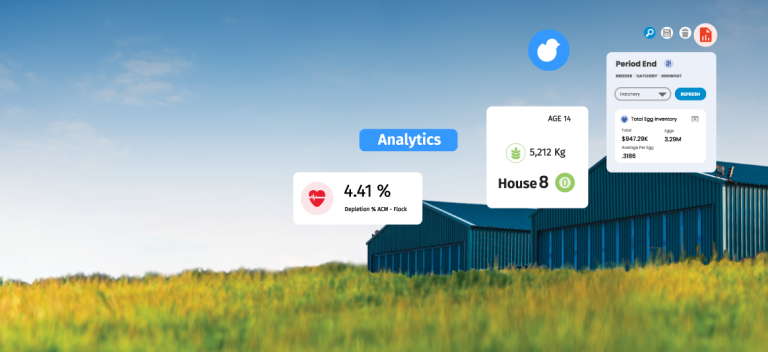The modern world generates more and more data every day, and as people and companies gather extensive amounts of this data into and from production systems, websites, smartphones, smart homes, internet of things (IoT devices), it becomes a bigger challenge to ensure the data is trustworthy. Good data is the heart of any business, but bad data can lead to some negative outcomes.
A question we all must ask ourselves is how effectively is data used in our business? Is there any way to evaluate that?
In the poultry industry, the universal measuring stick of FCR is used to evaluate how effective the feed converted into the live-weight of a bird. Sometimes birds could eat lots of feed but don’t grow much, which sets off alarms and forces us to evaluate many inputs, while birds eating high energy extremely good feeds growing very fast reassures us all that we are doing the right things. Despite the fact that high energy feeds come at higher costs and therefore higher cost of live weight, FCR is still a critical measuring stick.
If we think of data as the feed for growing your business, we can consider the measurement of DCR – Data Conversion Ratio. The business collects data and converts it into valuable information that helps with analysis, performance calculations, and data-driven decision making, or the equivalent of bird weight in business terms.
What if DCR is low? This may occur when not enough essential information is collected, like mission-critical data- mortality, weights, feed consumption, egg production, set and hatch data, and others. Today it may be rare cases when such information is not collected regularly, but it is highly likely it is still collected retroactively, or with a delay, thus reducing DCR greatly. If a business does not have data on time then they have no way to convert it into actionable intelligence.
Other possible issues – data collected and stored in silos without integration. This is quite common in many companies. Farm data is stored separately from hatchery data or feed mill data, and there is no flow of data throughout the supply chain. Differences in storage methods or formats can also negatively affect DCR. As we discussed in a previous post, data “silo-ing” can lead to data degradation and further negate the value. Missing data points are frequently also viable information, a sign that something is wrong and your process needs attention.
Can a company have lots of data collection points, collect data in real-time, and connect it across the supply-chain and still have low Data Conversion Rate? Absolutely! Just like high-quality feed requires a good environment and healthy birds to do its job, data needs help to return its full value. If data is collected but there is no way to convert it to consumable information– then it’s not being given the necessary attention. Analysis using tools like business intelligence helps maximize the value of data and give you the best possible DCR.
What are the key steps to improve your company Data Conversion Rate? Focusing on how data is collected comes first. Data should be collected as close to the source and as soon after it is generated as possible. Remember that data should also be consolidated and linked for traceability. Get the data out of silos and put it into a central and single version of the truth. Finally, well-structured data can be converted by business intelligence tools into valuable insights and information. With high DCR, data can be used to make critical business decisions. An old Russian proverb says: “Measure seven times, cut once”.
Today I will ask you again: do you put data at the heart of your poultry business?



